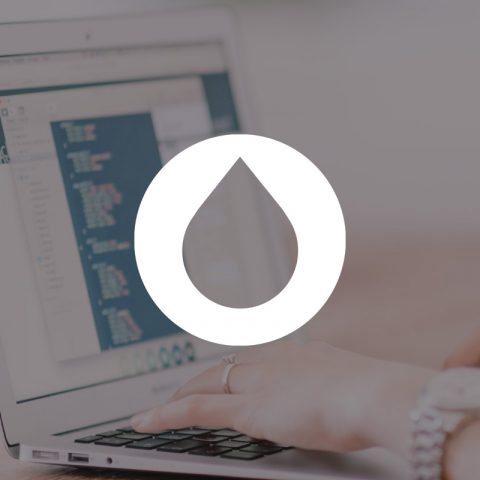Drupal 9
Released in June 2020, Drupal 9 brings lots of upgrades and improvements, especially under the hood (for example using major new versions of Symfony and Twig), as well as some much needed sanitising and house cleaning (for example cutting down on 3rd party dependencies and dropping support for out-of-date, deprecated code).
Combined, this translates into improved performance, a better developer experience and enhanced security. A year into its release and it’s prime time for Drupal 9. It’s battle ready as a candidate to use on the most sophisticated and complex of sites (e.g. those with complex integration pieces or multi-lingual or multi-site requirements).
Backward compatibility
The standout feature of Drupal 9 however is its ability to provide a structured and relatively easy upgrade path with backward compatibility from Drupal 8. Beginning with Drupal 9, all major Drupal software releases are now relatively painless, far more seamless and won't require any major rewrite of code or redevelopment of your website or platform.
Drupal 8 had this backward compatibility built into it (the first version of Drupal that did) and Drupal 9 is the first major release to deliver on it. There is no backward compatibility to Drupal 7. Drupal 8 was a major rewrite of Drupal that crucially put backward compatibility at its core.
So what does End-of-Life (EoL) mean? Is there a difference in what EoL means to Drupal 7 versus Drupal 8 websites? And what approach are we recommending for upgrading from each?
End-of-Life
End-of-life (EoL) means that a software is no longer supported. In this instance, that means from November 2021, Drupal 8 will no longer be supported and the same goes for Drupal 7 with an EoL date set for Nov 2022. This means no more bug fixes, security updates, core commits, or documentation for each respective version.
Even if your organisation is on a tight budget, staying on an outdated platform isn’t worth the potential risks. Security, compatibility and compliance are all problems with EoL software. It’s time to plan, time to upgrade!
You might be wondering about the odd running order, with an earlier EoL for a later version (Drupal 8, Nov 2021) and a later EoL date for an earlier version (Drupal 7, Nov 2022)? This is mainly due to two factors. The first is that there is no backward compatibility before Drupal 8 (so upgrading from Drupal 7 is a significantly larger task than upgrading from Drupal 8). The second is the COVID-19 pandemic — the Drupal community wanted to give as much time as possible to help those sites and organisations still on Drupal 7.
End of Drupal 8
Drupal 8 was released in November 2015. It has served us well as a community, agency and partner to our clients. It was a significant change to previous versions and brought an incredible array of improvements, covering mobile and responsive design, advanced configuration management, yet more performance improvements, improved theming, a simplified authoring and editorial experience, built-in web services and better accessibility support. As mentioned above, it was also the first version of Drupal that incorporated backward compatibility.
This meant, from Drupal 8 onwards, upgrading between full versions of Drupal would be far less onerous and far less likely to require a root and branch redevelopment of your website or platform.
There will still be some effort required to upgrade from Drupal 8 to Drupal 9 depending on the sophistication of your Drupal 8 site. For example, work would be needed if your site has complex integrations, sophisticated configuration or interdependencies or has a lot of bespoke code. But on the whole, upgrading from Drupal 8 to Drupal 9 will be manageable without having to redevelop your platform or website root-n-branch and from the ground up.
End of Drupal 7
Since its release in January 2011, Drupal 7 has also served us — as a community, agency and partner to our clients — well. It was a step change in usability, performance improvements and (as ever) more security improvements. In total it introduced us to more than 11,000 contributed modules, 600 themes, and 200 distributions and while Drupal 8 is now firmly first choice, Drupal 7 still powers a huge number of sites and platforms.
There’s upward of 20,000 Drupal 7 sites in the UK alone including hundreds within the arts cultural sector - the Science Museum, BFI, Royal Collection Trust, the British Museum and the Roman Baths Bath, to name but a few. However, there is no upward compatibility from Drupal 7 to either Drupal 8 or Drupal 9. That means upgrading is a much bigger undertaking.
Now that it reaches its end of life, we must thank Drupal 7.0 for its 10+ years of service in November of 2022, let it go and plan for the future (upgrading to Drupal 9 or migrate to another platform).
What does this mean for your Drupal 7 site?
Upgrading from Drupal 7 (to Drupal 8 or Drupal 9) will be a much bigger undertaking. It will effectively mean you will need to redevelop your platform or website from scratch.
Keeping your website current and up-to-date is a journey, not a destination and we talk about the opportunities upgrading from Drupal 7 will bring below. It’s important to recognise however that now is the time to plan.
What is the Drupal upgrade path for Drupal 7 to Drupal 9?
If you haven’t started already, it’s time to start planning. Either for your switch to Drupal 9 or another platform (we work with the other super wonderful open source CMS, WordPress). The timing of Drupal’s releases, Drupal 8 and Drupal 9’s compatibility and the upcoming end-of-life map out a nice clear path for you to follow:
Now: This is the time to start planning for your migration from Drupal 7. At the time of writing, the official EoL for Drupal 7 is still some 18 months away. BUT upgrading can be a time-consuming effort and you don’t want to leave it to the last minute, so time is of the essence here.
2021: Prepare the ground, discuss and get buy-in internally. Talk to your current agency and get a picture of the scale of the work you’re looking at. Also, corral relevant resources (time and money). Most good projects take 3-6 months, so ideally start the move in Q3-4 2021, This gives you plenty of time to complete the project before the EoL cut-off point.
2022: Don’t leave completion too late. Look to complete the upgrade (or migration) in Q1/Q2 of 2022.
How “End-Of-Life” can bring about Happy New Beginnings
Because of the differences between Drupal 7 and Drupal 8 and 9, this transition (from Drupal 7 to 9) will require rebuilding most of your site. While this is a major undertaking, it provides you with an opportunity to improve your site — the user experience, the brand positioning, creative design and communication strategy, site content, structure and architecture, and potentially the administrative experience.
So when planning your Drupal 9 upgrade, consider embarking on a comprehensive redesign process that refocuses your site on your users’ goals and needs. Stakeholder and user interviews, user testing, usability audits, analytics assessments, accessibility audits, and redefined goals can all be incorporated into the migration planning process to define the key improvements — to functionality, architecture, design and content — that would most benefit your site and its users.
If you were going to completely rebuild your house to install new electrical and plumbing, stronger walls, energy-efficient insulation, and new roofing, wouldn’t you consider this the perfect time to put in your dream kitchen, add bigger closets, and build out the attic? So why not embark on that site redesign you’ve been thinking about or build in that collections integration piece you’ve always wanted to offer to users?





